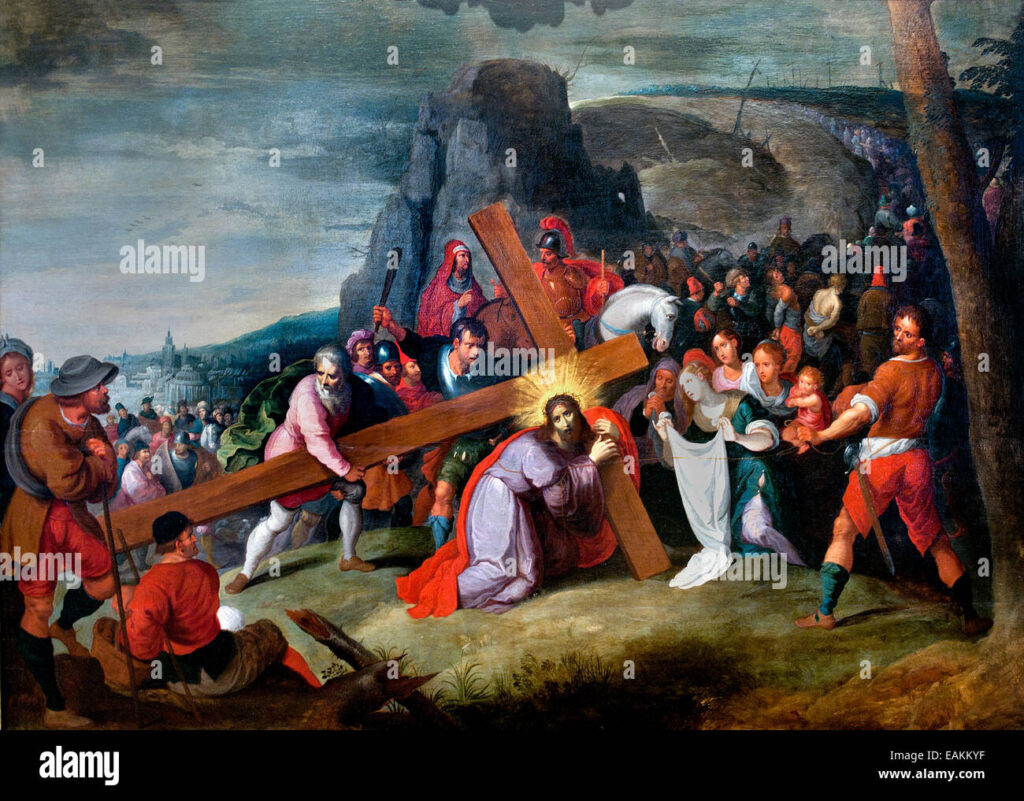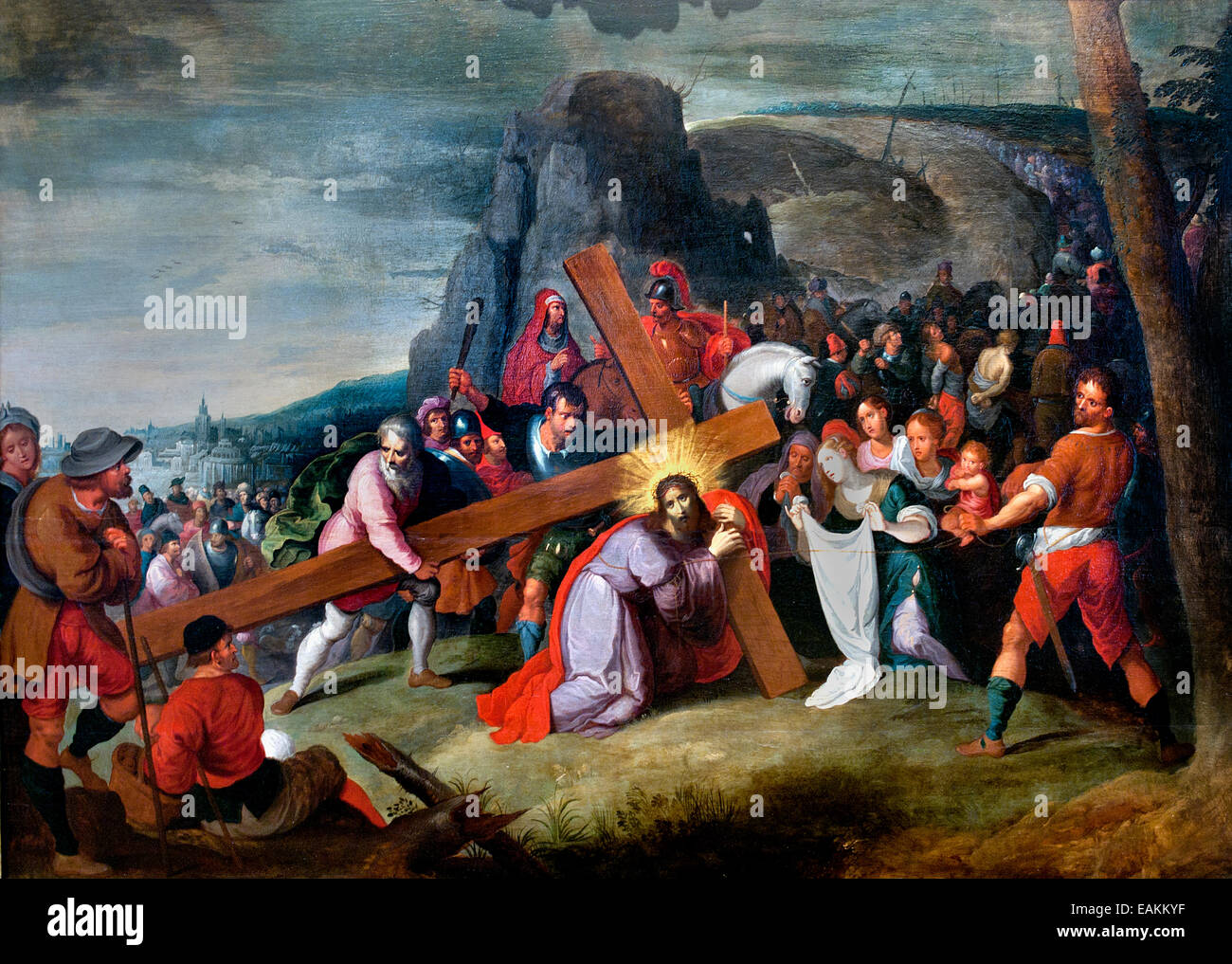
Saint Véronique: Unveiling the Life, Legend, and Legacy of Veronica
Saint Véronique, often known as Veronica, is a figure shrouded in both deep religious significance and historical ambiguity. While not directly mentioned in the canonical Gospels, her story has resonated through centuries of Christian tradition, particularly within the Roman Catholic Church and other Christian denominations. This article aims to explore the multifaceted aspects of Saint Véronique, examining her legendary life, the significance of the Veil of Veronica, and her enduring legacy within religious art, popular devotion, and cultural interpretation.
The Legend of Saint Véronique
The story of Saint Véronique centers around the Passion of Christ. According to tradition, as Jesus Christ carried the cross towards Calvary, a compassionate woman stepped forward from the crowd. Moved by his suffering, she offered him her veil (a cloth) to wipe the sweat and blood from his face. When Jesus returned the veil, it miraculously bore the imprint of his Holy Face. This woman is identified as Véronique.
The name “Véronique” itself is considered by some to be derived from the Latin words “vera icon,” meaning “true image.” This etymological connection reinforces the central theme of the legend: the acquisition of a true likeness of Christ. However, it’s essential to acknowledge that the name’s origin and the story’s development are subjects of scholarly debate.
There are various versions of the legend, each adding details to the narrative. Some accounts place Véronique as a resident of Jerusalem, while others connect her to the early Christian community in Rome. Some traditions even identify her with the woman healed of hemorrhage in the Gospels, though this association is not universally accepted. The core element that remains consistent across these variations is the compassionate act and the miraculous imprint of Christ’s face on the veil. The account of Saint Véronique demonstrates the power of empathy.
The Veil of Veronica: A Relic of Profound Significance
The Veil of Veronica, also known as the Sudarium of Veronica, is the physical relic believed to be the cloth used by Véronique to wipe Christ’s face. Over the centuries, several purported Veils of Veronica have emerged, each claiming authenticity. The most prominent is kept at St. Peter’s Basilica in Vatican City. This relic is displayed only on rare occasions, adding to its mystique and reverence. [See also: History of Relics in Christianity]
The historical origins of the Veil are difficult to trace definitively. Mentions of a holy image of Christ’s face appear in historical records dating back to the Middle Ages. However, it’s challenging to ascertain whether these references pertain to the same relic or different iterations of the legend. The significance of the Veil lies not only in its purported physical connection to Christ but also in its symbolic representation of faith, compassion, and the power of divine intervention. Many believe the Saint Véronique Veil possesses healing powers.
The Veil has become a powerful symbol in Christian art and devotion. The image of Christ’s face imprinted on the cloth, often referred to as the “Volto Santo” (Holy Face), has been replicated and venerated for centuries. It serves as a reminder of Christ’s suffering and sacrifice, as well as the importance of compassion and acts of kindness. The very story of Saint Véronique is about kindness.
Saint Véronique in Art and Popular Devotion
Saint Véronique is a recurring figure in Christian art, particularly during the Late Middle Ages and the Renaissance. She is typically depicted holding the Veil of Veronica, displaying the image of Christ’s face. Artists such as Hans Memling, Domenico Fetti, and El Greco have created notable depictions of Véronique, each capturing the emotional depth and spiritual significance of the legend. These artistic representations have played a vital role in popularizing the story and fostering devotion to the saint.
Beyond artistic representations, Saint Véronique is venerated in various ways within the Catholic Church and other Christian traditions. She is often invoked as a patron saint of photographers, laundry workers, and those who work with images. Her feast day is celebrated on July 12th in the Roman Catholic Church. Many churches and chapels are dedicated to her, and her story is often recounted during Lenten devotions, particularly the Stations of the Cross. The devotion to Saint Véronique continues to this day.
The Stations of the Cross, a popular Lenten practice, typically includes Véronique as the sixth station. This station commemorates the moment when she offers her veil to Christ. Meditating on this station encourages believers to reflect on the importance of compassion, empathy, and acts of service to those in need. The Stations of the Cross provide a powerful visual and spiritual reminder of Christ’s suffering and the role of individuals like Véronique in offering comfort.
Historical Context and Scholarly Perspectives
While the legend of Saint Véronique is deeply entrenched in Christian tradition, it’s important to approach it with a critical and historical perspective. As mentioned earlier, Véronique is not mentioned in the canonical Gospels. The story of the woman who offered a cloth to Christ appears to have developed later, likely during the Middle Ages. The association of this woman with the name “Véronique” and the specific details of the Veil emerged gradually over time.
Scholars have proposed various theories regarding the origins of the Véronique legend. Some suggest that the story may have evolved from early Christian practices of venerating images of Christ. Others believe that it may have been influenced by apocryphal texts and popular folklore. Regardless of its precise origins, the legend of Saint Véronique clearly resonated with believers and served as a powerful vehicle for expressing faith, compassion, and devotion.
It’s also crucial to distinguish between the legend of Saint Véronique and the historical reality of the Veil of Veronica. While the Vatican’s Veil is a tangible object with a history of its own, its authenticity as the actual cloth used by Véronique is a matter of faith rather than historical certainty. The Veil’s significance lies in its symbolic value and its role as a focus for religious devotion.
The Enduring Legacy of Saint Véronique
Despite the historical ambiguities surrounding her story, Saint Véronique remains a significant figure in Christian tradition. Her legend embodies timeless values such as compassion, empathy, and the importance of acts of kindness. The Veil of Veronica serves as a powerful symbol of faith, sacrifice, and the enduring presence of Christ’s image in the world. The story of Saint Véronique is one of faith and sacrifice.
In a world often marked by suffering and injustice, the story of Véronique offers a message of hope and inspiration. It reminds us that even small acts of compassion can have a profound impact and that even in the darkest of times, the light of faith can shine through. The image of Christ’s face imprinted on the Veil serves as a constant reminder of his suffering and sacrifice, as well as the importance of striving to live a life of love and service.
The legacy of Saint Véronique extends beyond religious circles. Her story has been adapted and reinterpreted in various cultural contexts, inspiring artists, writers, and musicians. The theme of the compassionate individual offering comfort to those in need resonates with people of all backgrounds and beliefs. The story of Saint Véronique continues to inspire acts of kindness.
In conclusion, Saint Véronique is a complex and multifaceted figure whose story has captivated believers for centuries. While the historical details of her life may remain shrouded in mystery, her legend serves as a powerful reminder of the importance of compassion, faith, and the enduring power of the human spirit. The Veil of Veronica, whether viewed as a historical relic or a symbolic representation, continues to inspire devotion and remind us of the sacrifices made for humanity. The story of Saint Véronique is a testament to the enduring power of faith and compassion. The act of Saint Véronique is often remembered and retold. The impact of Saint Véronique is undeniable. The legend of Saint Véronique is a cornerstone of faith. The tale of Saint Véronique is a cherished one. The compassion of Saint Véronique is an example for all. The devotion to Saint Véronique remains strong. The image of Saint Véronique is iconic. The name of Saint Véronique is synonymous with kindness. The story of Saint Véronique is a lesson in empathy. Many find inspiration in Saint Véronique. The actions of Saint Véronique are lauded by many. The impact of Saint Véronique is felt worldwide. The story of Saint Véronique is one of unwavering faith.

